- Hawaii
- Big Island
- From Waipi'o to Hilo: the tropical coast of Big Island

From the Waipi'o Valley to the outskirts of Hilo, the northeast coast of Big Island will seduce you with its lush tropical vegetation. This part of the island is the most exposed to the bad weather that has eroded its relief, forming numerous gulches where water flows towards the ocean after the almost daily rains.
Thanks to Highway 19, it's easy to explore the surroundings, which offer an astonishing diversity of landscapes!
Summary
1The Waipi'o Valley, the Valley of the Kings
The Waipi'o Valley is a lush green valley located just north of Big Island. It is a highly symbolic place of Hawaiian culture since it is here that the future king Kamehameha was hidden during his childhood when wars were raging in the archipelago. Kamehameha lived and trained in these remote valleys in complete secrecy before becoming Hawaii's greatest warrior and unifier. Today, less than 100 souls still live there, whose main activity remains agriculture.
You will have understood that the Waipi'o Valley is deserved! You will have the choice to simply come and contemplate the beautiful view from the Lookout at the end of the road, or to venture into the heart of the valley to discover some of its well-kept secrets.
Important information: Access to the Waipi'o Valley and beach has been closed since February 2022 for an undetermined period. The access road has been deemed "unsafe" and requires extensive repairs. All access (vehicles and pedestrians) is therefore prohibited until further notice, except for the few inhabitants of the valley. This closure is also a godsend for nature conservationists who hope that the Waipi'o Valley will take advantage of the absence of tourists to regenerate. It is therefore possible that the valley will remain isolated for a while. Note that the Waipi'o Valley Overlook remains accessible.
Waipi'o Valley Lookout
This is the only easily accessible "attraction" in the area! At the very end of the road, a belvedere will offer you a nice panorama on the Valley of the Kings. You will be able to see the end of the Waipi'o Valley that opens on the ocean, ending with a beautiful black sand beach, framed by two steep slopes.
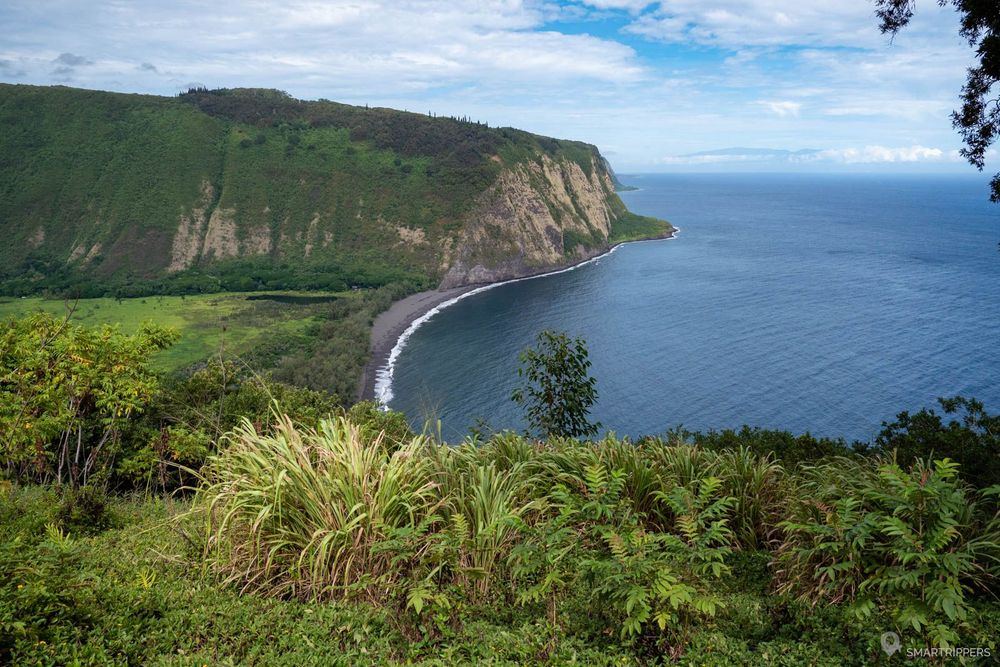
Access to the lookout is easy thanks to a small parking lot with only a few spaces located at the end of Honokaa-Waipio Road. This parking lot is reserved for minute stops only. Note that it is quickly full but rotations are fast. From the parking lot, a stairway goes down to the viewpoint. We will find sanitary facilities at the belvedere with some picnic tables in the shade.
Waipi'o Black Sand Beach - Closed
Access by Jeep or round trip on foot of 4,5 km - 1h30 - Medium
If you are resourceful or if you have a Jeep Wrangler, don't hesitate to go down the 400m drop to the long black sand beach that borders the Waipi'o Valley. The access is not easy, but once down there you will taste the quietness of the place and the satisfaction of having come all the way down here, especially if you tried it on foot (although the hardest part will be on the way back).
The beach is rather wild and lined with a few trees where you can easily find some shade. After about 300m, you will be stopped by the river that you will have to ford if you want to continue your walk on the sand, or you can go on the Muliwai Trail, a 24 km round trip, beautiful but difficult, which is usually done in 3 days.
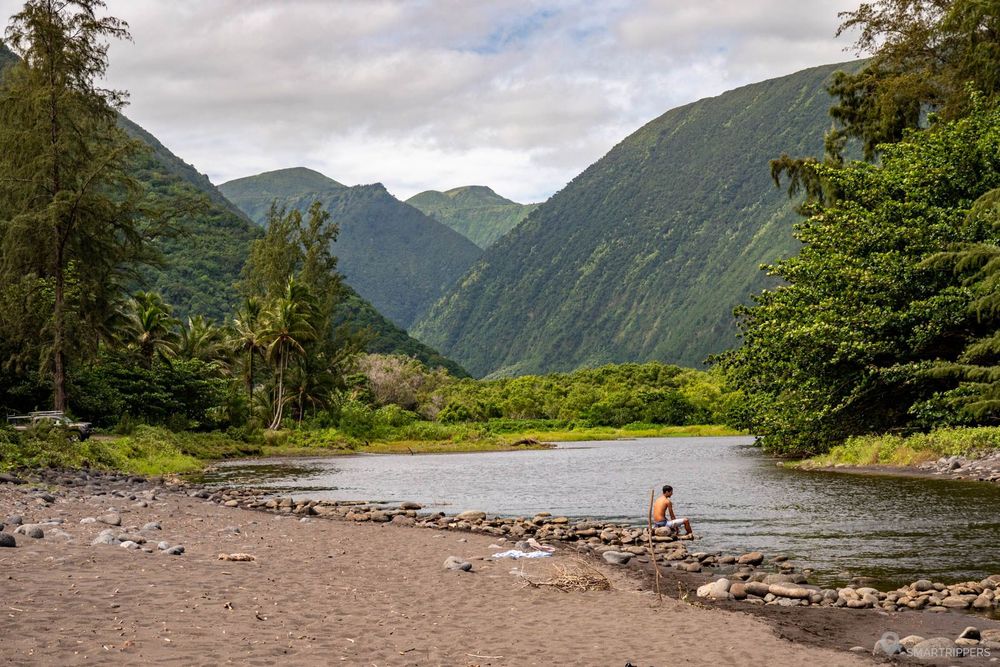
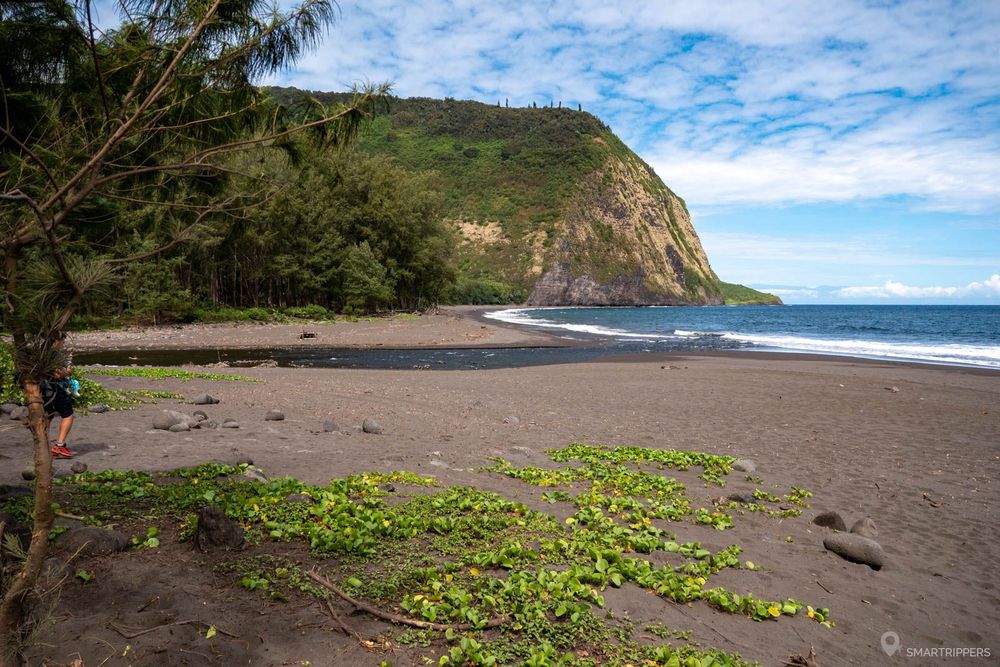
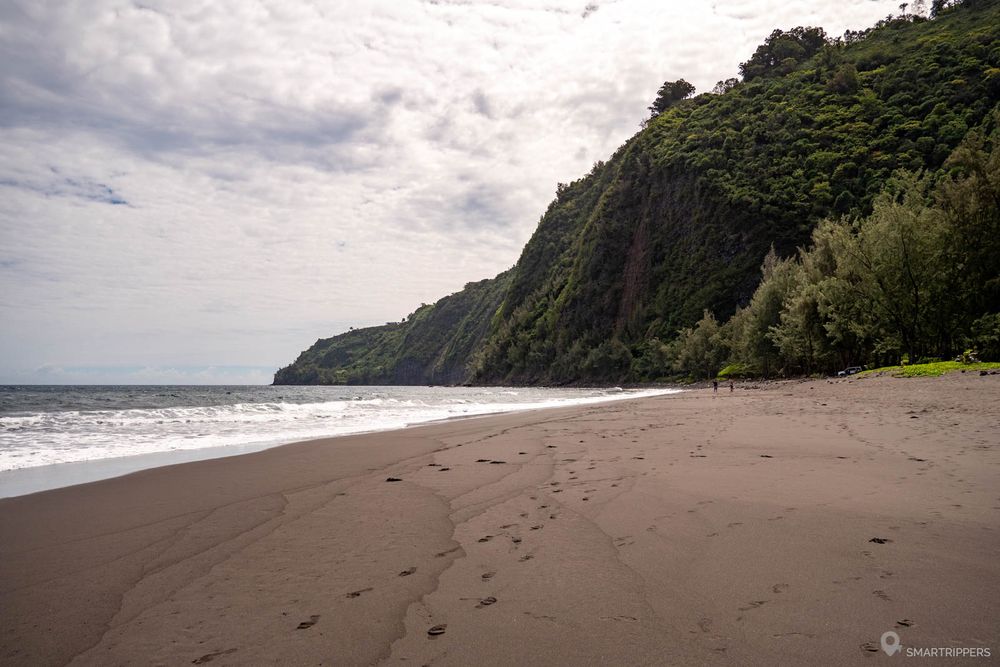
The beach being located at the end of the valley, it is not uncommon that the wind comes to tickle your ears, or even mess up your hair in most cases. So you won't be too motivated by a swim here, unless you let yourself be motivated by a splash in the freshwater river.
There are only chemical toilets on the beach. Swimming is not lifeguarded.
How to get to Waipi'o Black Sand Beach
Only the lucky owners of a rented Jeep Wrangler will be allowed to get off there in a 4x4 (well, they will be allowed to get off there because most car rental companies on the island simply forbid access). A check is usually made at the beginning of the descent to avoid problems and only large 4x4s are allowed to pass. If you don't have a Wrangler or if you prefer not to tempt the devil, you may consider walking down the road.
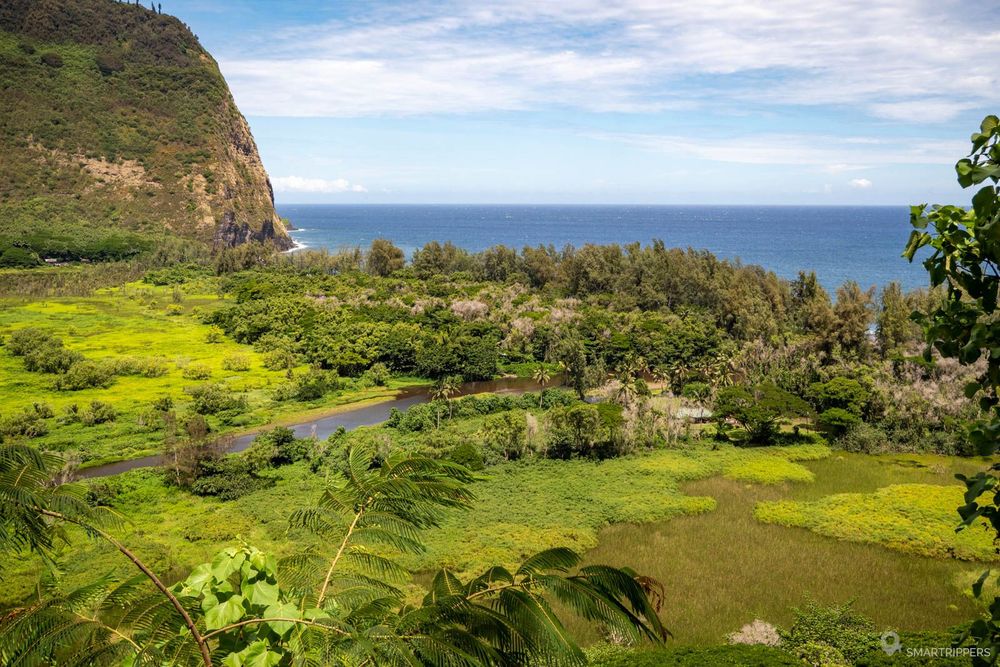
If you attempt the descent in a rental car, just know that you will have no recourse in case of problems.
The descent is really steep, with an average slope of 25% on the first part. The road is paved but strewn with potholes. The steepness of the slope can be quite frightening here.
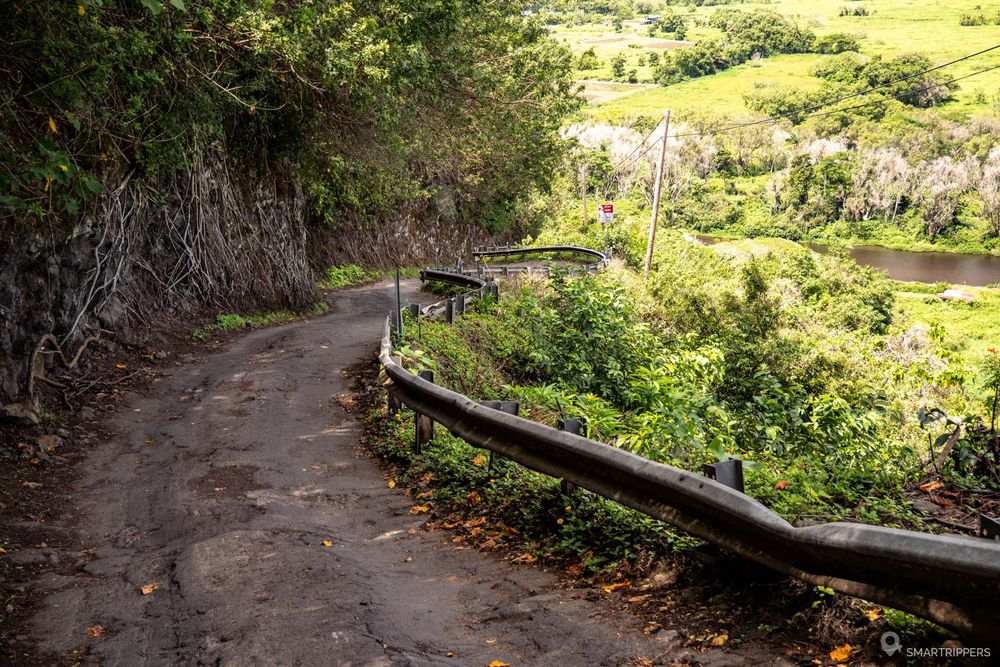
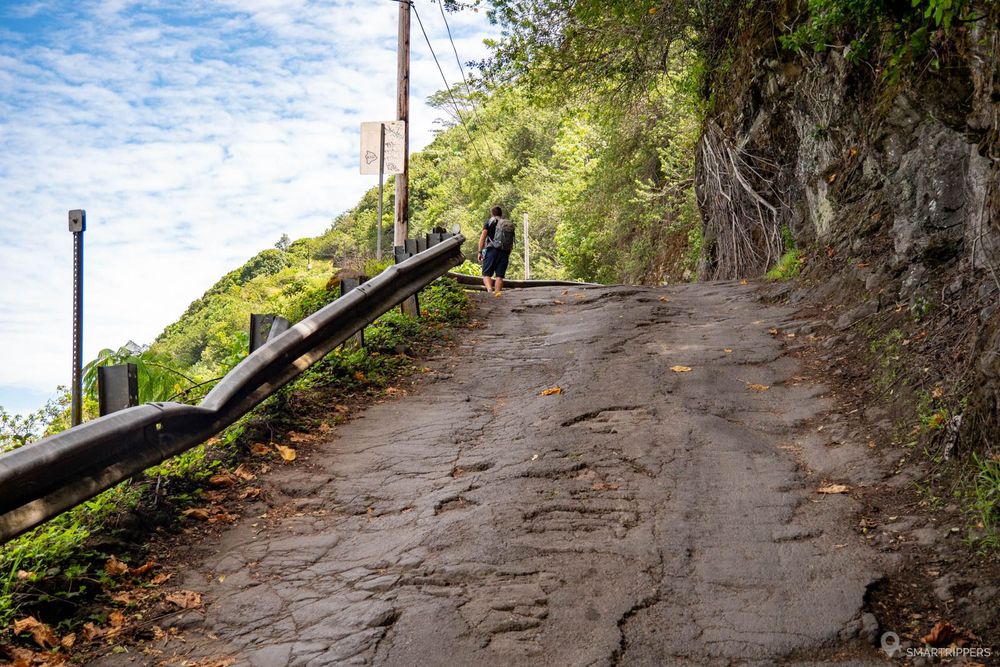
When you get to the bottom, you will have to turn right to get closer to the ocean. The paved road will quickly give way to a dirt track with big muddy ruts (if it rained recently), but nothing insurmountable with a Wrangler. Just expect to be a little shaken.
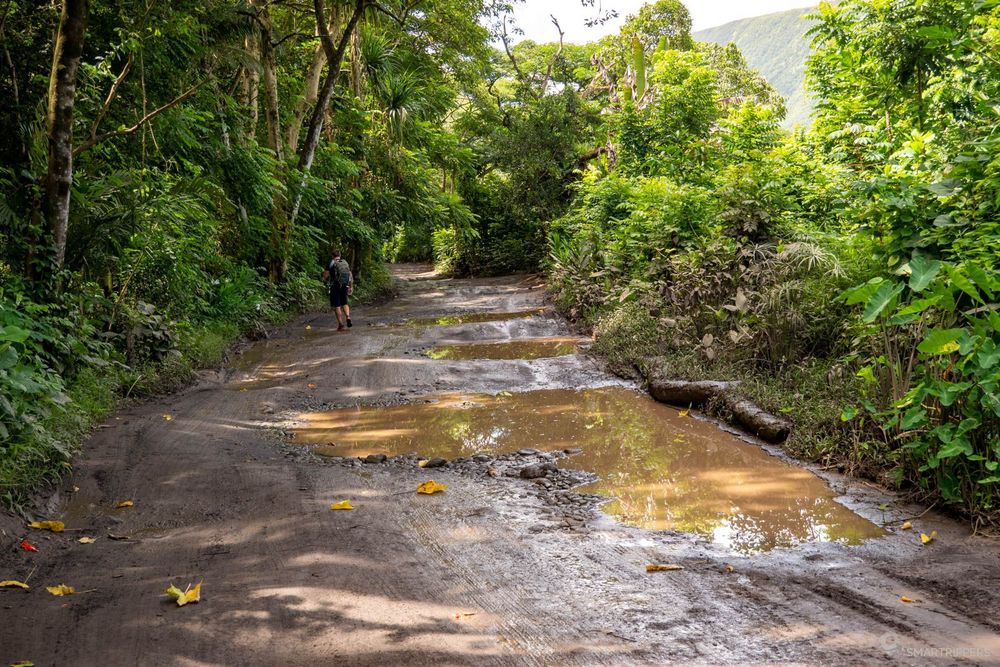
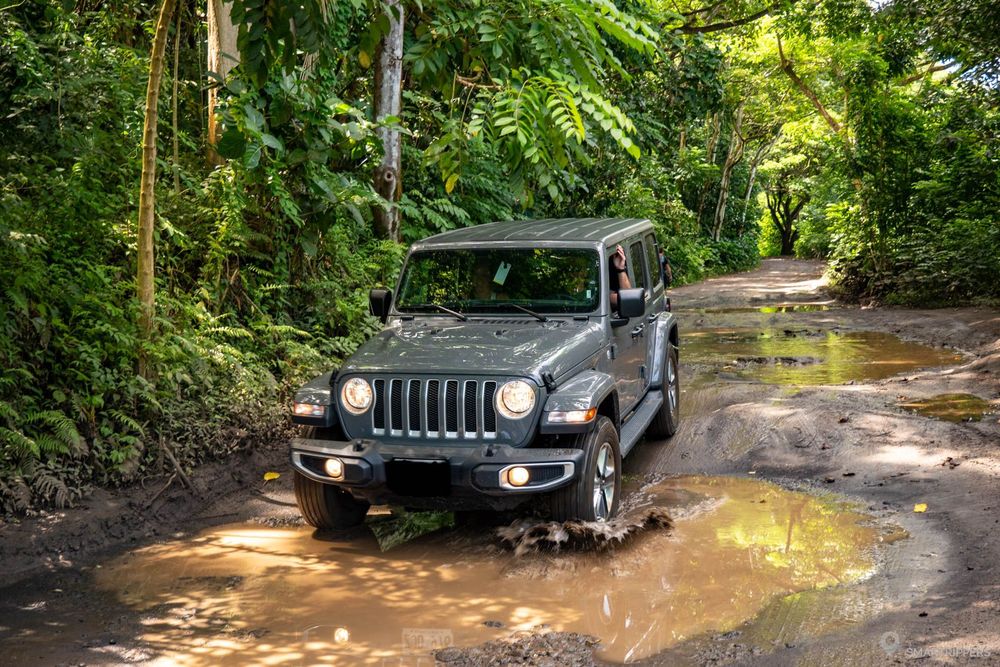
If you are on foot, don't underestimate the energy required to return. Climbing the 400m of vertical drop is extremely grueling. Make sure you have enough water to hydrate yourself and slowly ascend at your own pace.
Hi'ilawe Falls - Closed
If you still have some strength left and especially a lot of time, you will be able to go to Hi'ilawe Falls, the highest falls of Big Island (422 meters). The problem is that their access is quite difficult, especially since you have to cross private properties.
Unfortunately, we did not have the courage to go there on foot at each of our passages and the people who picked us up by hitch-hiking on the way back in 2019 did not manage to find the access...
It is therefore difficult to give you complete information here, but from what we know, once you get down into the valley (on foot or with a Jeep), take the road that continues to the left and leads to the valley (opposite to the track that leads to the beach). Once at the end of the road you will have to finish on foot to reach them.
2Kalopo State Recreation Area
Here is a small wild and little frequented park located on the heights between Waipi'o and Hilo. The interest of this park is the discovery of a primitive forest, an area with a particular ecosystem that it is possible to discover thanks to several trails. It is also an opportunity to go to the cooler side, the park being located in the foothills of Mauna Kea.
We tested the main trail: the Primitive Nature Trail which allows you to quickly explore the forest by making a short loop.
Primitive Nature Trail
Loop of 1,4 km - 25 minutes - Easy
This rather fast loop takes us to discover a virgin and wild vegetation, mainly composed of ferns of all sizes. Other plant species are also visible, such as wild strawberries. The highlight of the show is at the end of the loop (or at the beginning if you chose to do it counter-clockwise) with a bunch of impressive trees.
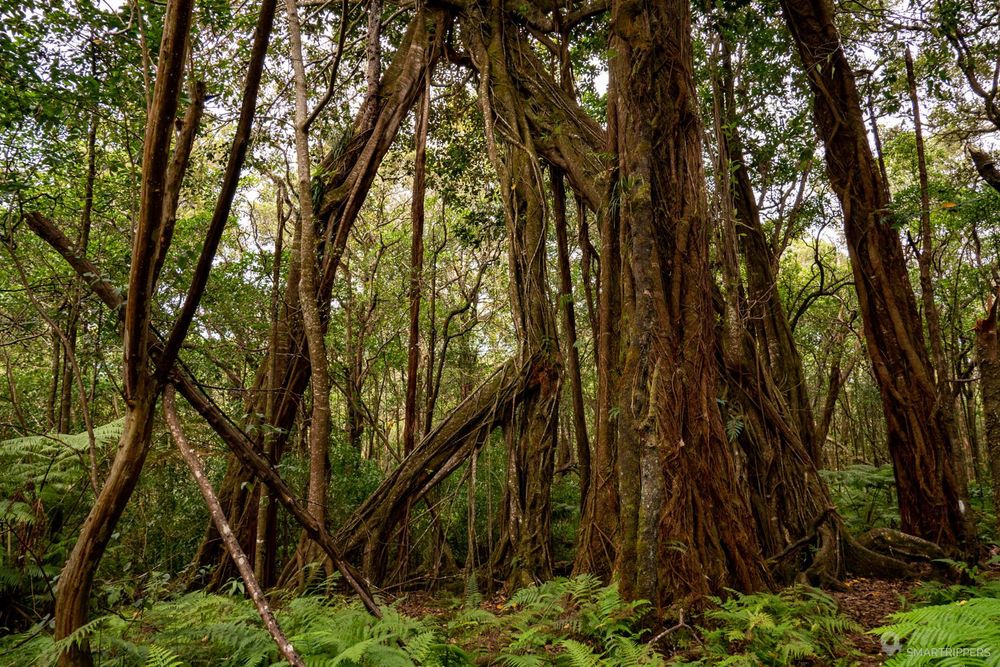
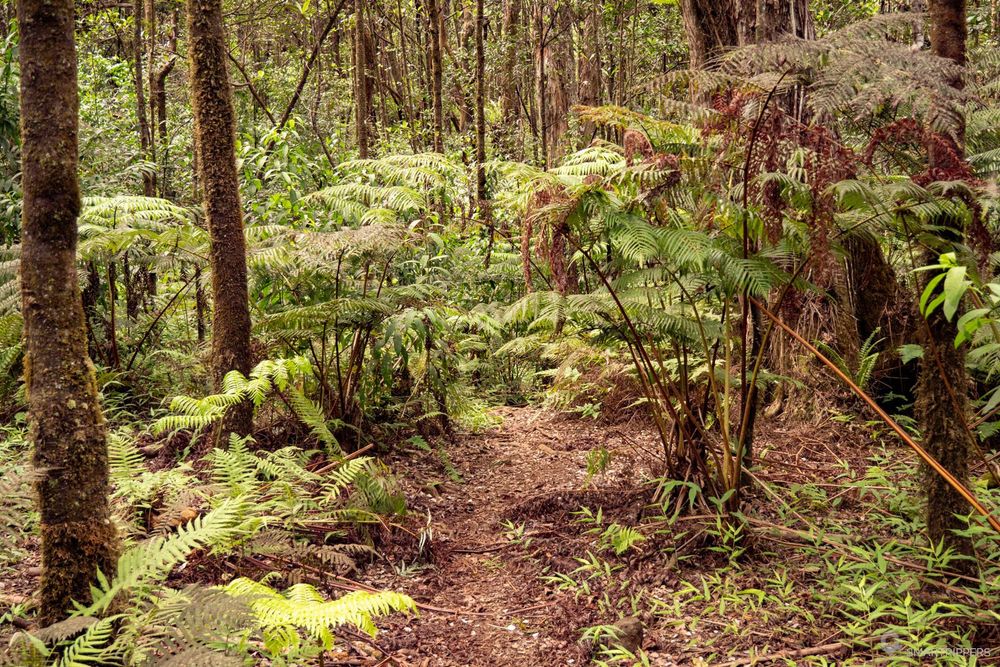
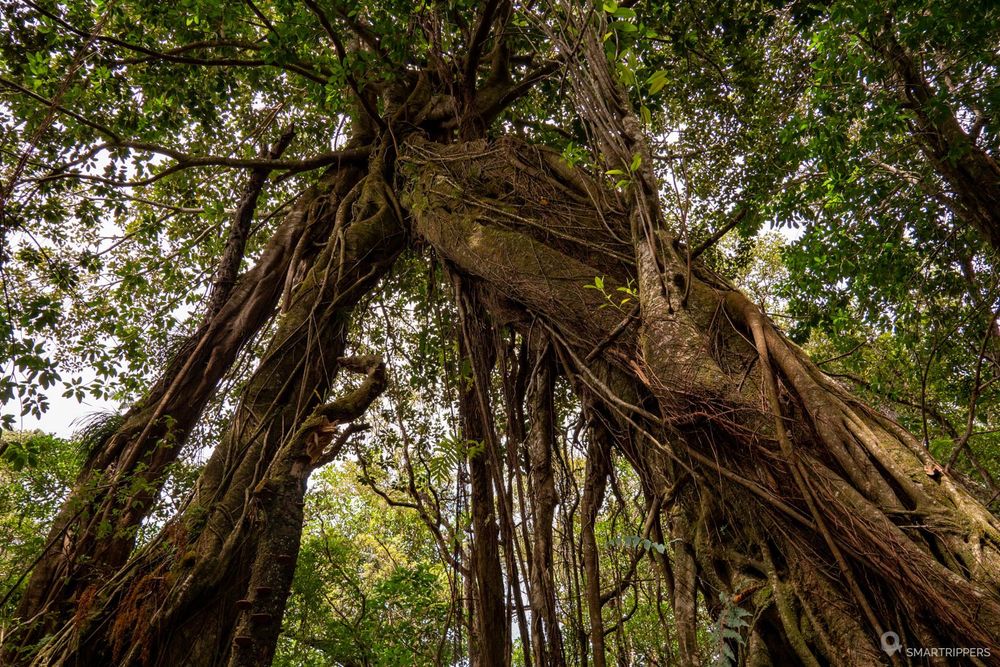
The trail will not always be easy to follow because of the lush vegetation (ferns and other shrubs) that you will have to cross many times to find your way. The place is humid but we were not bothered by mosquitoes.
Near the parking lot a small kiosk allows you to buy a flyer for an average of $1. This leaflet (in English) will give you explanations on the vegetation you will find along the trail.
On site you will find sanitary facilities and picnic tables. It is possible to rent small cabins to spend the night, the place is really quiet. Access to the park is free.
How to access the Primitive Nature Trail
To access the park you have to go to the end of Kalaniai Road. Once in the forest, continue again and follow the signs. Continue on past the picnic area until you reach a small parking lot near 3 cabins.
The beginning of the trail is at the very end of the road, after having crossed a kind of garden with an impeccable lawn before reaching the forest. Do not take the Jeep trail in front of the parking lot, which does not lead to the same place. Then follow the signs and let yourself be guided by the white marks painted on the trees.
3A stop to see the ocean midway
Laupāhoehoe Beach Park
If you are planning a picnic on the road or just want to see the waves crashing on the rocks, you can stop at Laupāhoehoe Beach Park. There you will find all the facilities you need for a lunch break and a little rest: sanitary facilities, numerous picnic tables, barbecues and large grassy areas...
On the ocean side, the waves come crashing on the rocks, the area being often beaten by the wind. The spectacle is pleasant especially at sunset.
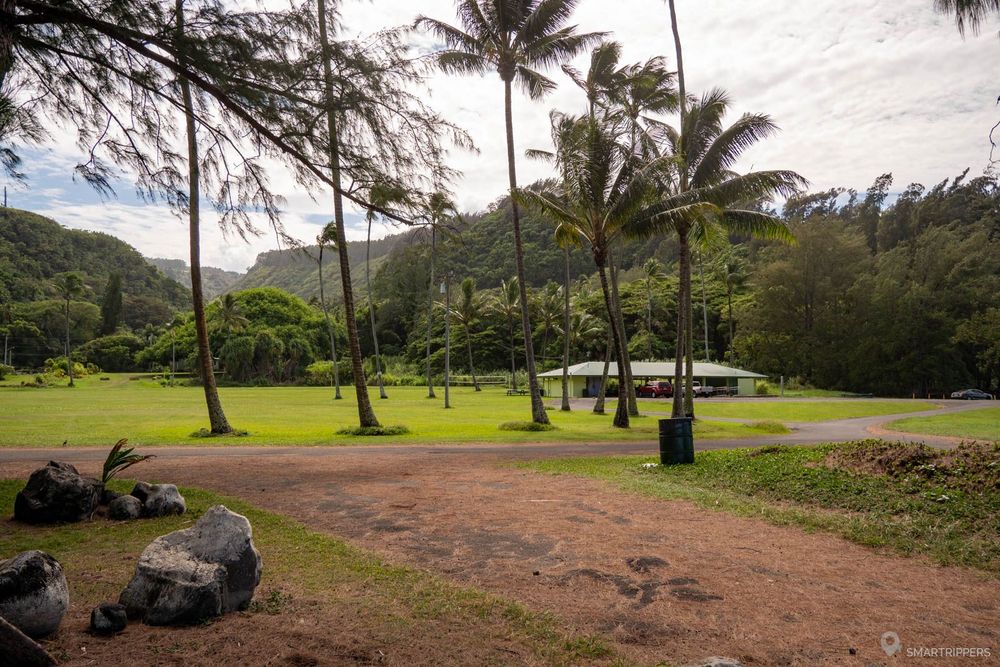
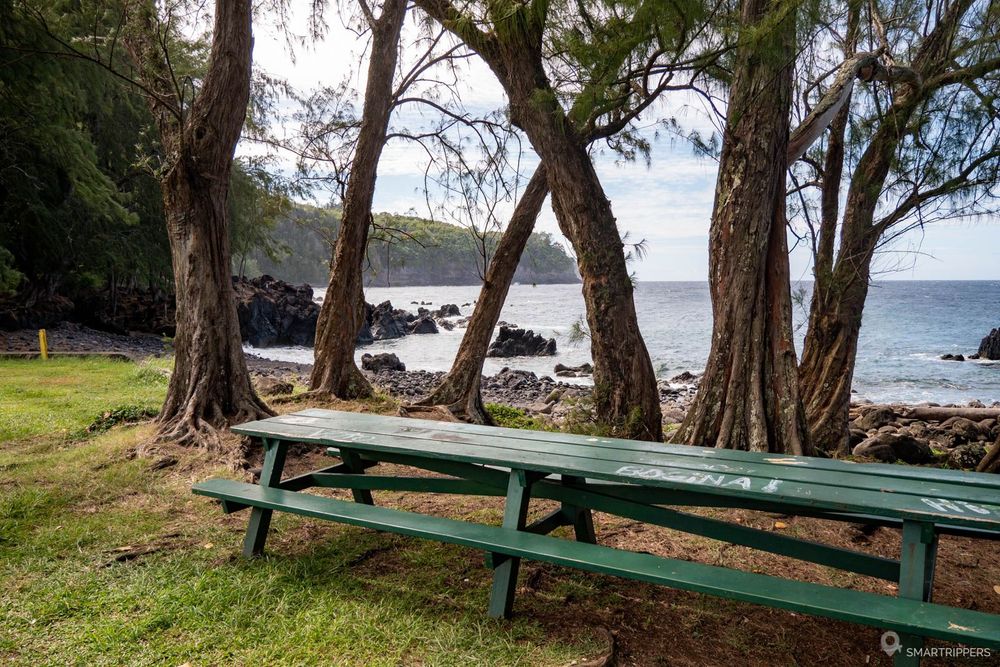
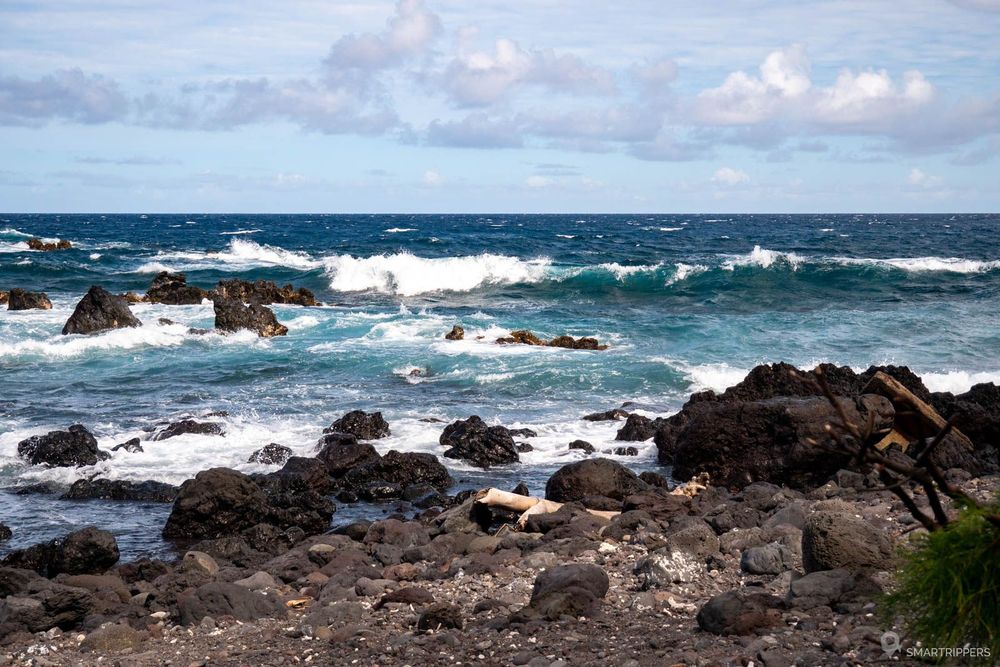
However, be careful because the area is notorious for its poor attendance in the evening.
How to get to Laupāhoehoe Beach Park
Access to Laupāhoehoe Beach Park is by following Lauphoehoe Point Road down to the ocean from Highway 19. There will be several parking areas on site.
4The Tropical Zone of North Hilo
The wettest area of Big Island is a few kilometers north of Hilo. It is the perfect opportunity to discover a luxuriant and open nature!
The 'Akaka Falls
Loop of 600m - 10 minutes - Easy
This is one of the most majestic waterfalls in Hawaii! Nestled in the heart of a small natural theater lined with moss covered cliffs, the 'Akaka falls jump straight into the void by making a dive of 135 meters to finish their run in a small inaccessible pool.
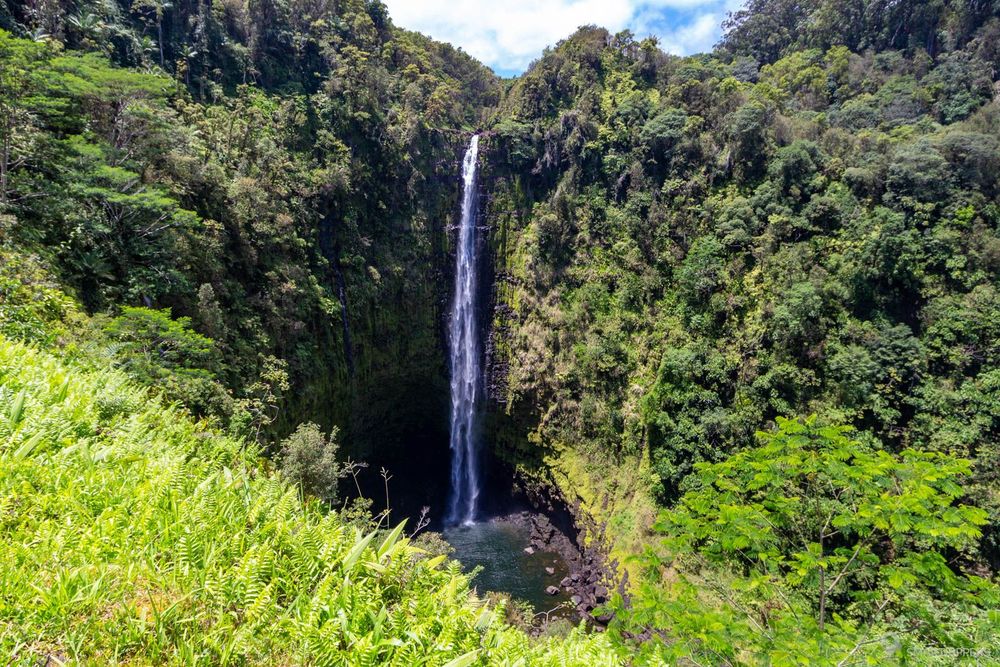
The Akaka Falls can be observed from a lookout that has been set up in the heart of the 'Akaka Falls State Park. The waterfall is not in the immediate vicinity but the view is interesting. Note that as for all waterfalls, the water flow can vary according to the rains.
To reach the viewpoint, you will have to take a concrete path that goes down a few steps to the viewpoint. The whole forms a loop of 600m which crosses a beautiful lush vegetation. On the way, it will be possible to admire also the Kahuna Falls, a smaller waterfall of 30 meters.
Please note that the access to the 'Akaka Falls State Park is not free of charge. To access it, you will have to pay $5 per car or $1 per pedestrian, to be paid at the small terminal of the parking lot.
How to get to 'Akaka Falls
The entrance to Akaka Falls State Park is at the end of Highway 220. The parking lot is not very big and it is not rare that it is full. If this is the case, you can park on the shoulder of the road before entering the park (in this case, the pedestrian rate will apply). Sanitary facilities are located at the level of the parking lot.
Old Mamalahoa Highway
This pretty road of 7.8 km is a "scenic road" that winds its way through lush vegetation interspersed with a few inhabited clearings. It serves the Hawaii Tropical Bioreserve & Garden and the Onomea Bay Trail. The old Highway, which is rather narrow, runs along a river and crosses a few gulches where it is possible to see a small waterfall approximately halfway down the road.
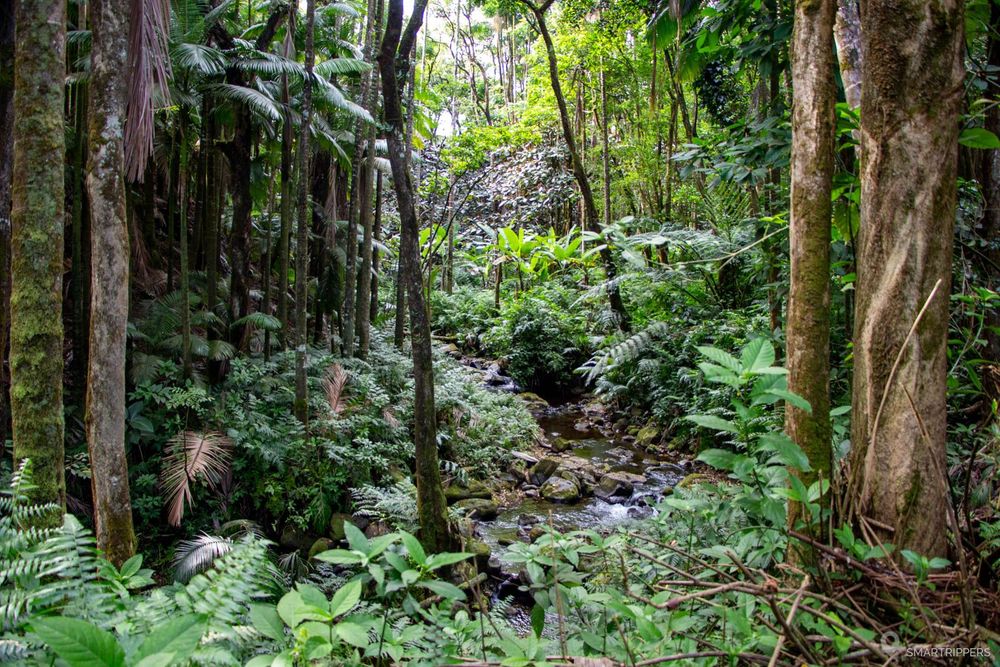
Do not hesitate to use it when you come to the area by temporarily leaving the Mamalahoa Highway (Highway 19). Beware however of mosquitoes if you go out for a break along the river, the place is particularly humid.
Hawaii Tropical Bioreserve & Garden
If you choose to visit only one botanical garden in Hawaii, you should go to the Hawaii Tropical Bioreserve & Garden (or Hawaii Tropical Botanical Garden of its former name). Presented as one of the most beautiful gardens in Hawaii, this botanical garden has totally captivated us! You can find there about 2000 species of plants!
We discovered trees and flowers that we had never seen before!
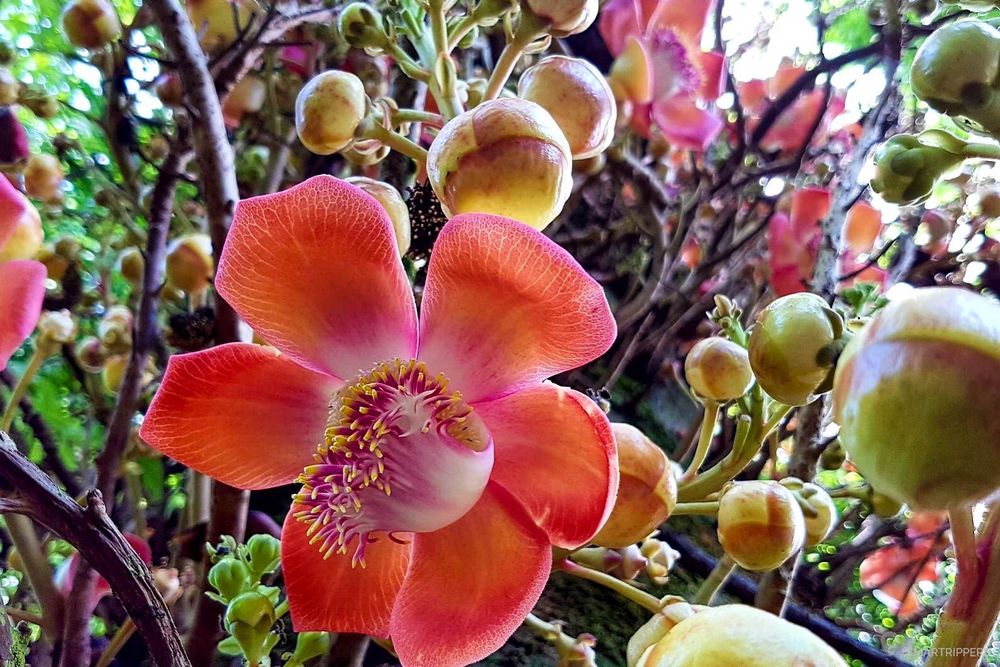
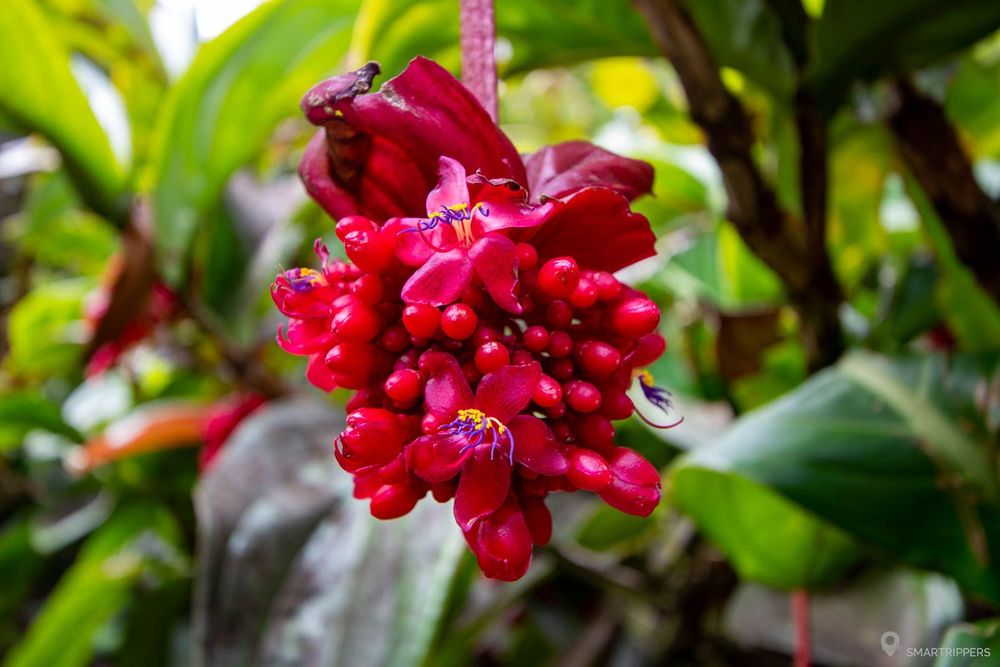
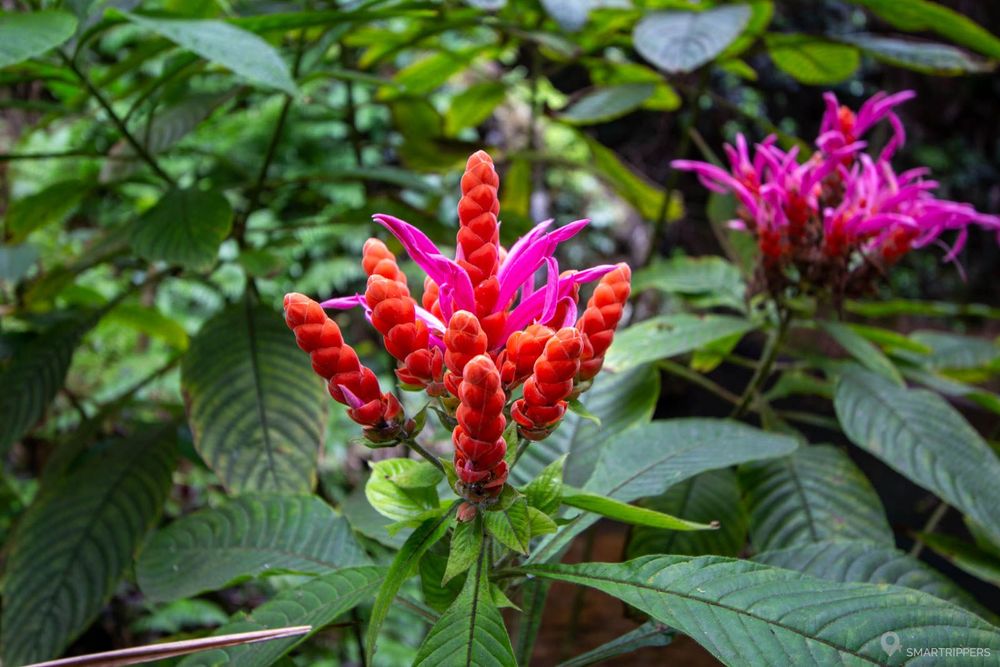
The garden is perfectly maintained and has countless flowers, with a space dedicated to orchids which are superb. Among the 200 species of palm trees, some are over 100 years old! It is also possible to see growing some tropical fruits such as pineapples.
The garden is laid out thanks to wooden footbridges, stairs and small paths that make us discover different floral atmospheres. In the middle of the garden, we can come and admire the small Onomea Falls, a rather simple waterfall which is in the property of the botanical garden. The route finishes at the level of the ocean with a beautiful view of Onomea Bay.

The garden is open every day from 9:00 am to 5:00 pm (except holidays). Last admission at 4:00 p.m. Count $25 per adult and $12 for children to access this little paradise. Allow approximately 2 hours of visit.
How to get to the Hawaii Tropical Bioreserve & Garden
The garden is located along the Old Mamalahoa Highway, a scenic road that runs through lush vegetation along the ocean. A large parking lot allows you to park on site.
Please note that it is not possible to access the garden from the Onomea Bay Trail that runs through the garden. A security guard ensures that walkers cannot enter the garden. The only access is from the parking lot.
Onomea Bay Trail
1.6 km round trip - 30 minutes - Easy
This short, easy trail will give you a beautiful view of the ocean and Onomea Bay before climbing back up to the road through a small palm forest. Halfway along the trail, the trail crosses the Hawaii Tropical Bioreserve & Garden and then walks close to the water where a stream will have to be crossed to reach the beautiful Onomea Bay.
The trail is first concreted and then continues on a small dirt track. The prettiest views are along the parts along the sea, at the beginning of the trail and then at the level of the small peninsula facing the bay after crossing the botanical garden. It is possible to combine this walk with a visit to the botanical garden from the latter.
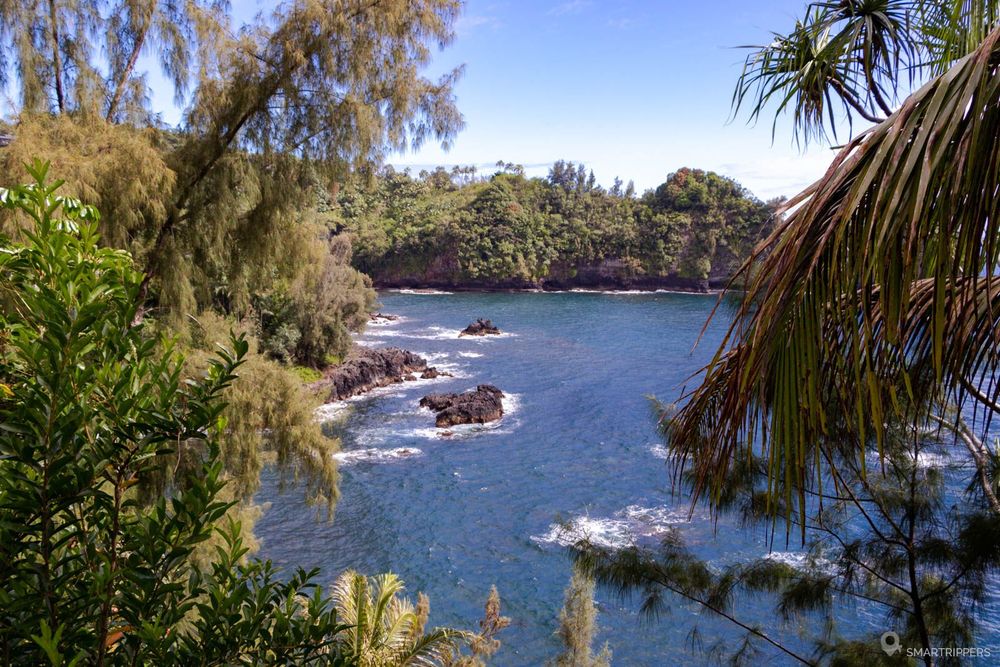
How to get to Onomea Bay Trail
You can either park along the Old Mamalahoa Highway and access the trail from one of its north or south ends, but there are few places to park. The other option is to take advantage of a visit to the Hawaii Tropical Bioreserve & Garden to use the trail as you travel across it. However, it is not possible to enter the Botanical Garden from the trail if you do not have an entry ticket.
Here we are at the end of this article. It will be possible for you to discover most of the points of interest listed here in one big day by going to and from Hilo or during a transit from Hilo to Kona via the north of the island.
We are Sandrine and Flo, French thirty-somethings. In 2019 we quit everything to live our dream, become nomads and travel around the world. We left with our baby, Lena, who was only 5 months old at the time. After a first trip around the Pacific Ocean by plane and a long 3 months stay in Hawaii, we left to discover Iceland for 3 months on board our 4WD pickup truck and truck camper. Then we continued our adventure in North America.
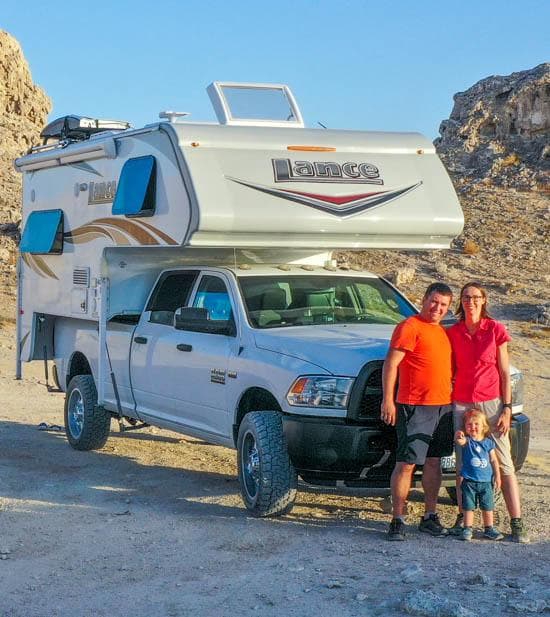
Today, if we can continue this adventure, it is above all thanks to our blog, Smartrippers! We created it one day in 2016, with the desire to share our good travel tips, without thinking that it would lead us there! We have developed it a lot over the years and have become experts on our 3 favorite destinations: Hawaii, Iceland and the American West. We now guide you to these destinations to help you plan the trip of your dreams!
Follow our adventures!